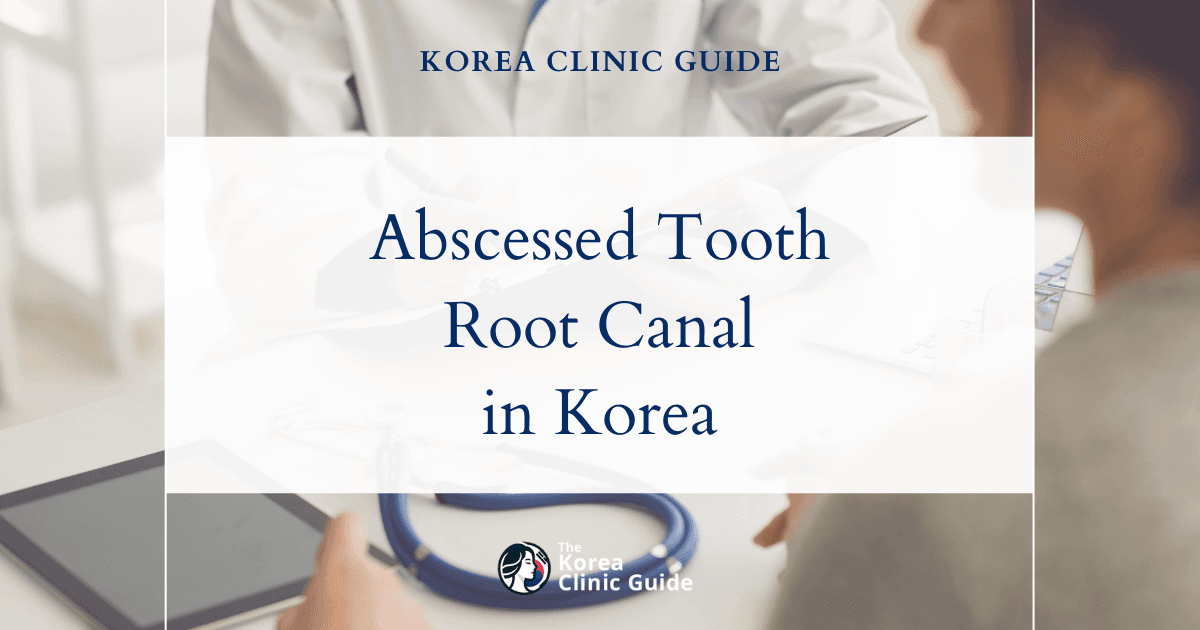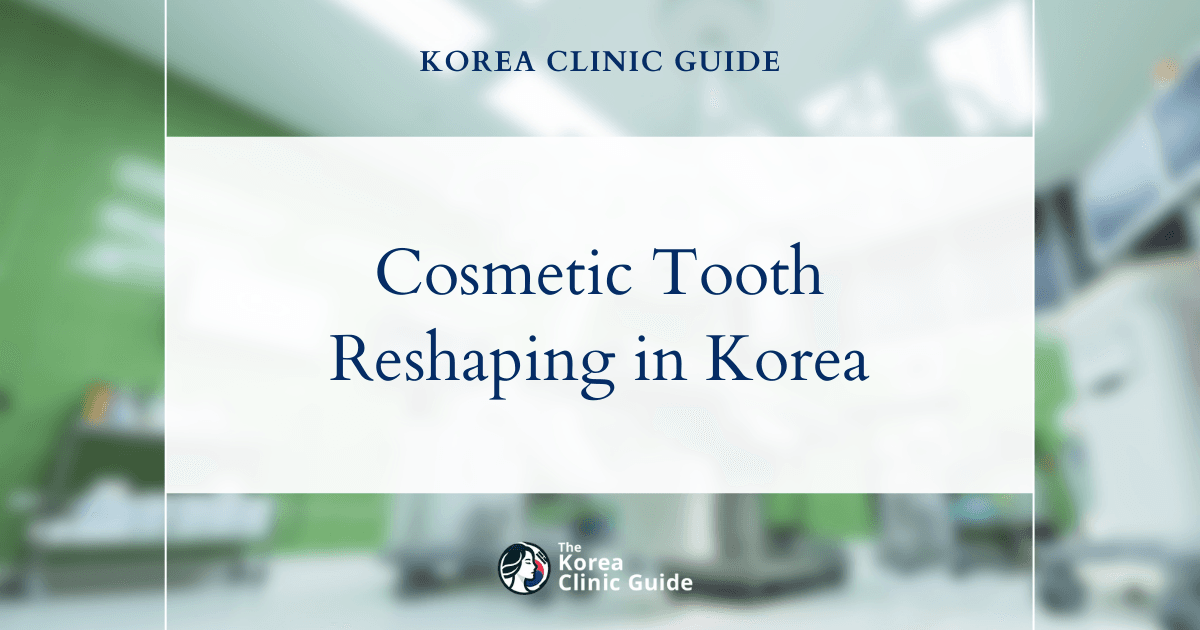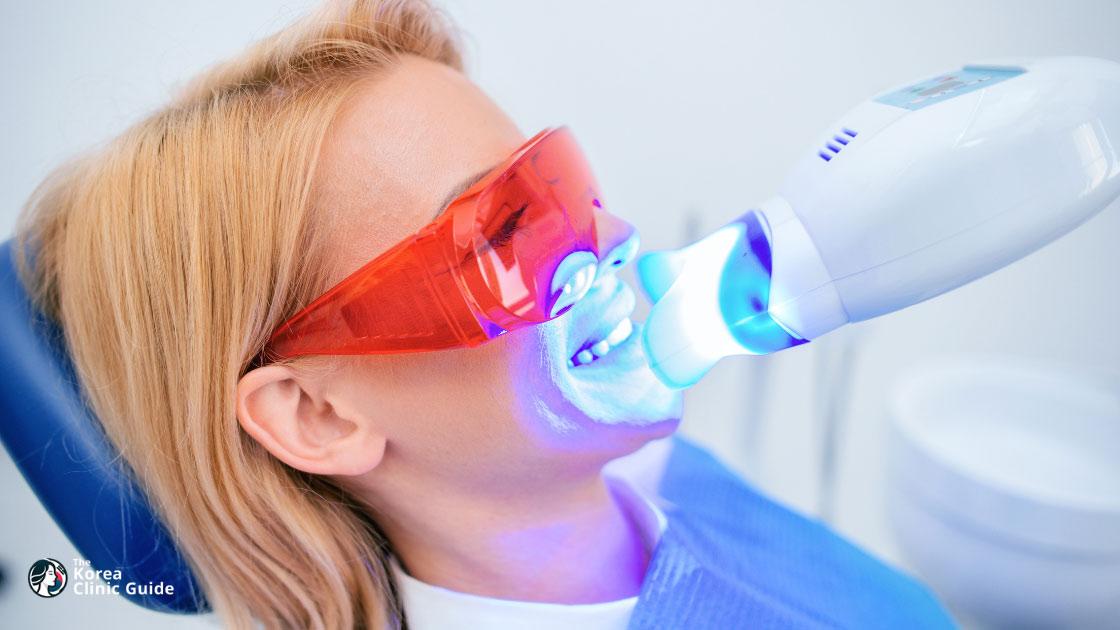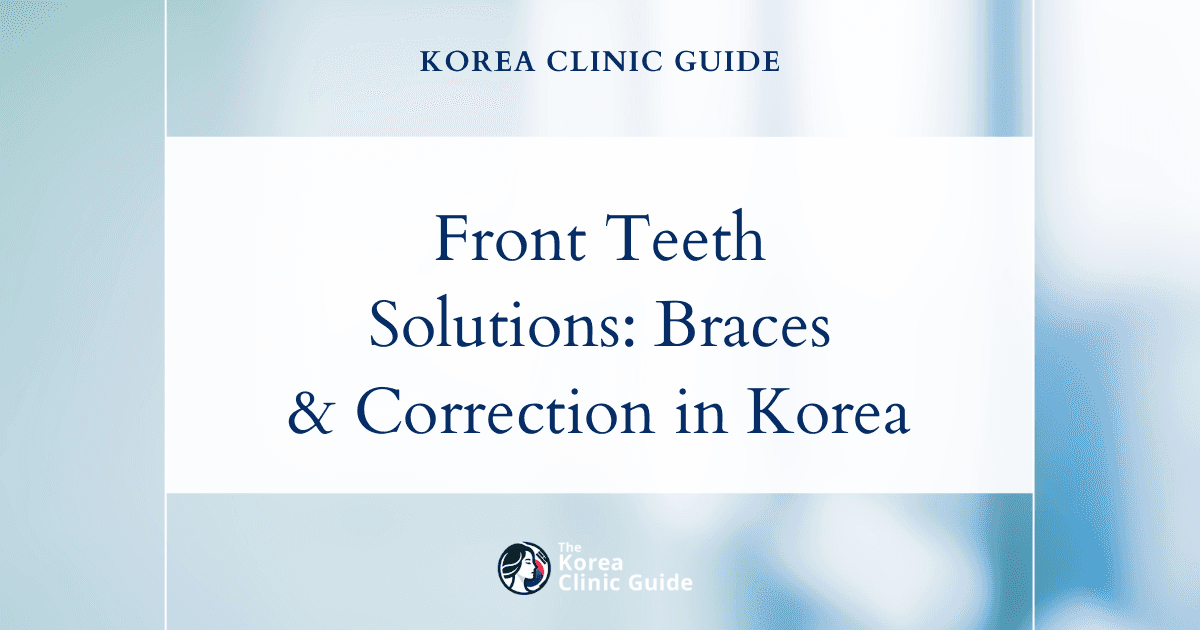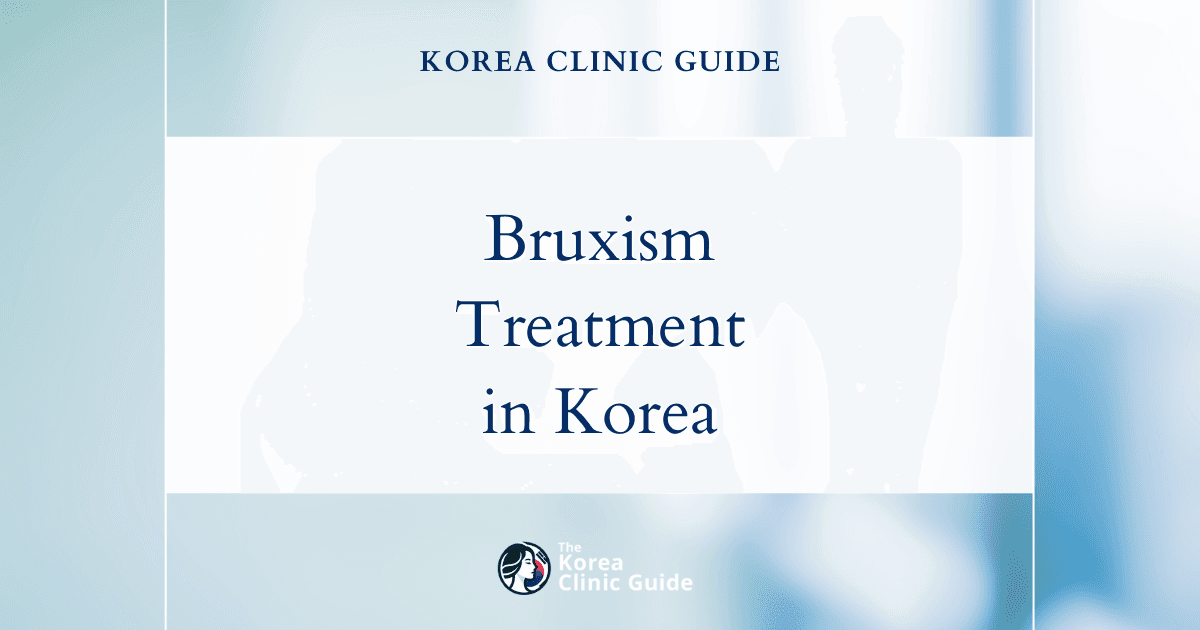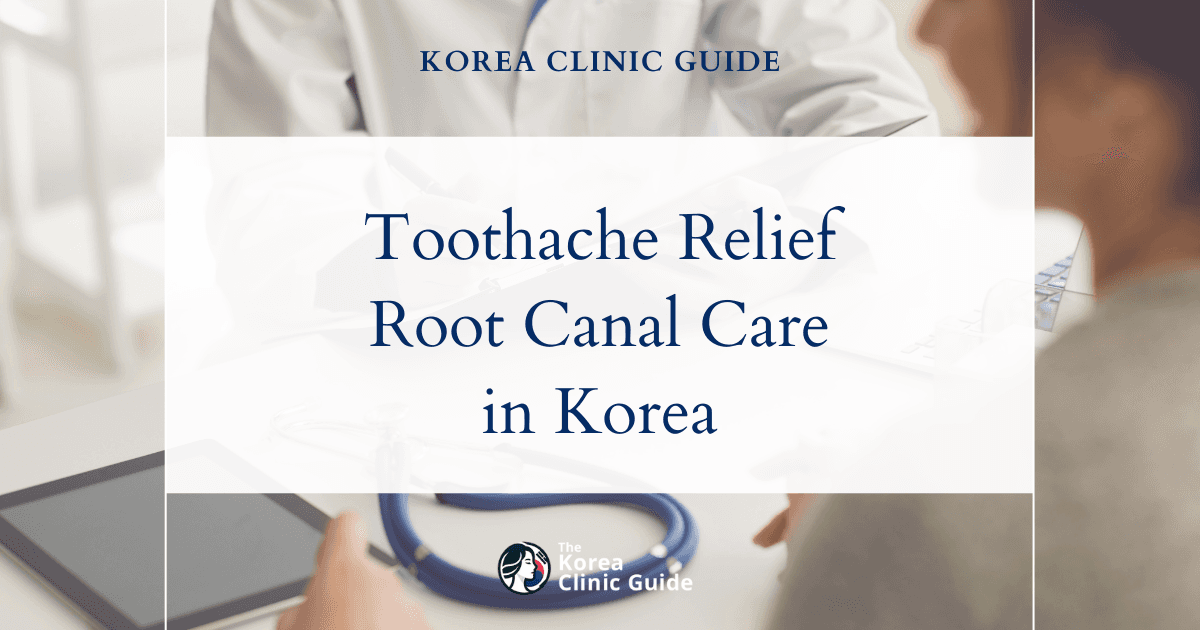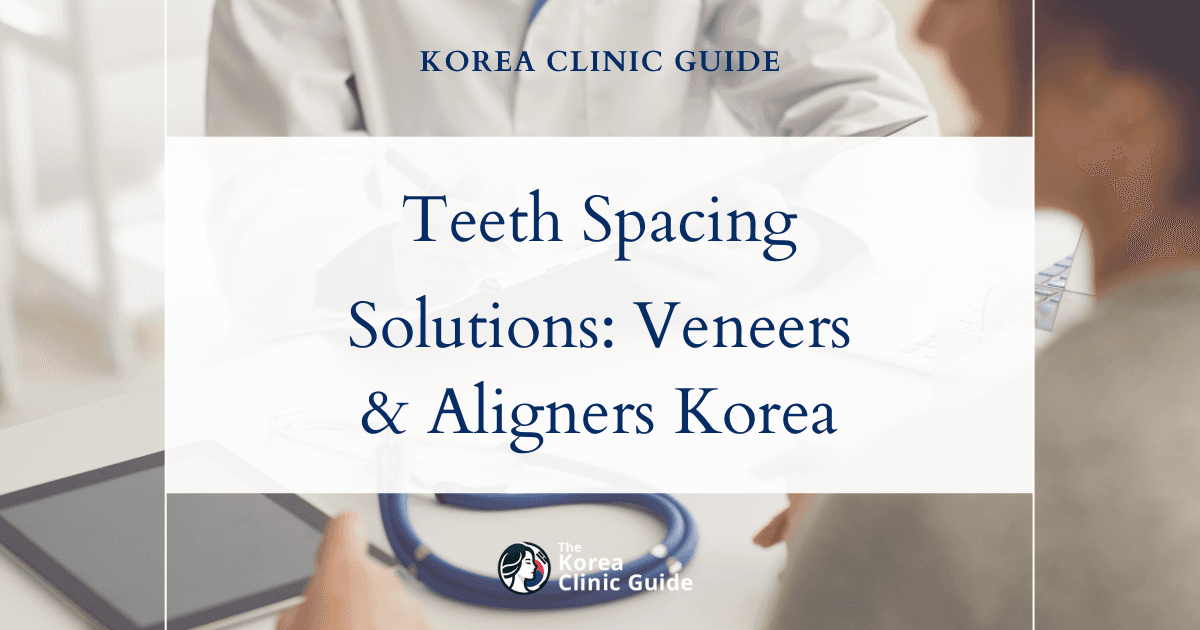Medical Tourism Blog
Dental Implant in Korea | Best Clinics, Costs, Procedure Types & More
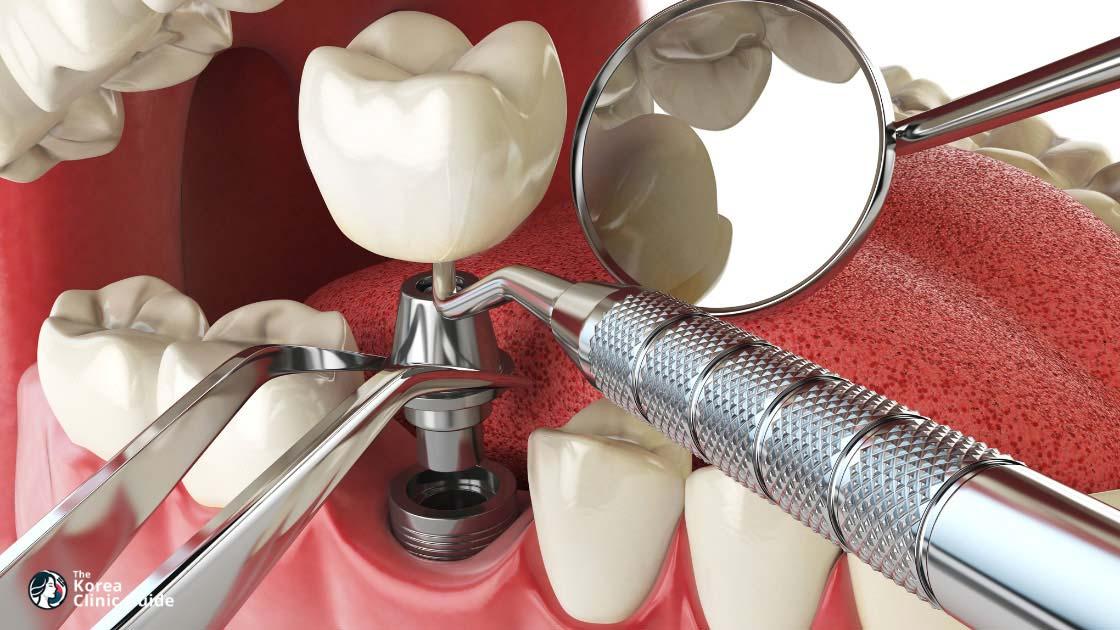
Table of contents
- What Is Implant?
- Best Clinics in Korea for Dental Implant
- Implant in Korea
- Cost of Implant in Korea
- Alternatives to Implant
- Conclusion
Considering treatment in Korea? Everything you need to know e.g. — how to avoid scams, visas, interpreters, recovery tips — in our Medical Tourism Master Guide. Plan with confidence in minutes, not weeks!
Did you know that Korea has become a global leader in dental implants, offering cutting-edge technology and top-notch patient care at a fraction of the price found in Western countries? As dental tourism continues to rise, this comprehensive guide explores why Korea stands out for dental implants, providing insights into the best clinics, cost-effective procedures, and advanced alternatives available for those seeking a perfect smile.
What Is Implant?
Dental implants are advanced medical procedures designed to replace missing teeth, offering a permanent and natural-looking solution. These prosthetic devices function as artificial roots that support a variety of dental restorations, including crowns, bridges, and dentures. Dental implants are highly regarded for their durability, aesthetic appeal, and ability to mimic the function of natural teeth.
Who Is It For?
Dental implants are an ideal solution for individuals who have lost one or more teeth due to various reasons, such as:
- Tooth Decay: Severe dental caries that result in tooth loss.
- Gum Disease: Advanced periodontal disease causing tooth mobility.
- Injury: Teeth lost due to trauma or accidents.
- Congenital Defects: Missing teeth from birth.
Candidates for dental implants should have healthy gums and sufficient bone density to support the implants. Certain medical conditions, such as uncontrolled diabetes or cancer, may affect the eligibility for the procedure. A thorough examination by a dental professional is necessary to determine candidacy.
Procedure Types
-
Endosteal Implants
- Description: The most common type of dental implant, these are surgically placed directly into the jawbone. Made of titanium, they resemble small screws or cylinders.
- Procedure:
- Preparation: A comprehensive dental exam, including X-rays and 3D images, to assess bone structure.
- Surgery: The implant is placed into the bone. Over a few months, the implant integrates with the bone in a process called osseointegration.
- Restoration: Once the implant is securely attached to the bone, an abutment is placed, followed by the attachment of the artificial tooth (crown).
-
Subperiosteal Implants
- Description: These implants are placed under the gum but on or above the jawbone. They are used for patients who do not have enough healthy jawbone and cannot or do not want to undergo bone augmentation procedures.
- Procedure:
- Preparation: Similar to endosteal implants, involving initial examinations and imaging.
- Surgery: A metal frame is fitted onto the jawbone just beneath the gum tissue. As the gums heal, the frame becomes anchored to the jawbone.
- Restoration: Posts attached to the frame protrude through the gums. The artificial teeth are then mounted onto these posts.
-
Zygomatic Implants
- Description: Used in cases of extreme bone loss where traditional implants are not an option. These implants are anchored in the cheekbone (zygoma) rather than the jawbone.
- Procedure:
- Preparation: Detailed imaging and planning to determine the precise placement.
- Surgery: Implants are placed into the zygomatic bone. This procedure is more complex and typically requires specialized training.
- Restoration: Similar to other implants, a healing period follows, after which the prosthetic teeth are attached.
-
All-on-4 Implants
- Description: This is a revolutionary technique where a full arch of teeth is supported by only four implants. It is especially suited for patients with significant tooth loss or decay but sufficient bone density in the front part of the jaw.
- Procedure:
- Preparation: Includes detailed imaging and planning.
- Surgery: Four implants are strategically placed in the jaw, two at the front and two at an angle in the back.
- Restoration: A temporary set of teeth can often be placed on the same day of surgery, with the permanent set fitted once the implants have fully integrated.
Dental implants offer robust and aesthetic solutions for tooth replacement, catering to diverse needs and conditions. Each type comes with its set of procedures and benefits, aimed at restoring not just the functionality of teeth but also improving the overall quality of life for patients.
Best Clinics in Korea for Dental Implant
Listed below are the best clinics in Korea for dental implant:
| Clinic Name | Key Features | Special Techniques |
|---|---|---|
| Gangnam Gentle Dental Clinic | Premier destination for dental implants in Korea; Led by Dr. Travis Kim (fluent in English); Personalized and patient-centered care; Flexible scheduling including emergency weekday/weekend care; Advanced digital equipment; Comprehensive dental services; Infection prevention and rigorous sterilization protocols; International patient focus | Innovative 3D guided implant technology; Use of world-renowned implant brands (Straumann, Osstem); Tailored treatments after thorough consultation |
| Minish Dental Hospital | Korea’s leading dental hospital; Trusted by expats/international patients; 14-floor facility in Gangnam; In-house laboratory and tech company; Highly awarded in Asia; Over 113,000 successful cases; K-pop celebrity clientele; Team of 102 dentists/technicians; Expert-led by Dr. Jung Ho Kang; Ethical, personalized treatment | Custom Minish Veneers; One-day smile makeovers; Advanced implant solutions; Innovative orthodontics; Teeth whitening; Restorative therapies |
| Blanche Dental Clinic | Located in Nonhyeon; Patient-focused and comprehensive care; Specializes in safe, precise implants; Transparent and honest consultations; Offers restorative, cosmetic, and orthodontic treatments; Sedation dentistry for stress-free experience; Aesthetic options like laminates, gum contouring, whitening, and smile packages | Evidence-based implant placements; Sedation dentistry; Custom smile design packages; Lifelong treatment philosophy |
Gangnam Gentle Dental Clinic
Gangnam Gentle Dental Clinic in the vibrant district of Seocho-gu, Seoul, stands out as the premier destination for dental implants in Korea, especially for international patients. The clinic is led by Dr. Travis Kim, a highly qualified dentist with academic training from Ohio State University and St. Johnsbury Academy, who speaks fluent English and is dedicated to making international visitors feel at ease by eliminating language barriers. Known for providing personalized, patient-centered care, Dr. Kim tailors every treatment to the individual’s unique needs and circumstances. Gangnam Gentle Dental Clinic’s commitment to honest and safe dental practices is reflected in its flexible scheduling—including emergency care availability on both weekdays and weekends—ensuring accessibility for busy or traveling patients. The clinic leverages advanced digital equipment and innovative 3D guided implant technology to reduce the overall treatment period and minimize the number of necessary visits. With a comprehensive range of dental services, from cosmetic dentistry and gum care to the use of world-renowned implant brands such as Straumann and Osstem, the clinic guarantees only essential treatments following thorough consultations. Prioritizing patient safety, the clinic employs stringent infection prevention and sterilization protocols, ensuring a clean and germ-free environment. Under the guidance of CEO Sungho Kim, Gangnam Gentle Dental Clinic combines expertise, accessibility, and patient comfort, making it the leading choice for dental implants in Korea.
You can check out their website here: Gangnam Gentle Dental Clinic Website
Minish Dental Hospital
Minish Dental Hospital stands as Korea’s premier dental destination, trusted by both expats and international patients seeking state-of-the-art family dentistry, cosmetic treatments, and transformative one-day smile makeovers. Located in Gangnam, Seoul, the impressive 14-floor facility offers comprehensive, world-class dental care—eliminating language barriers for visitors from around the globe. Minish is renowned for attracting well-known figures, including top K-pop celebrities from BLACKPINK and NewJeans, reflecting its sterling reputation within and beyond Asia. The clinic further sets itself apart by operating its own in-house laboratory and technology company, consistently staying at the forefront of dental innovation and excellence.
What truly distinguishes Minish Dental Hospital is its dedication to blending cutting-edge treatments with individualized patient care, making it the most highly awarded dental clinic in Asia. With over 113,000 successful cases, 84,500 hours spent on research and development, and a team of 102 top-tier dentists and technicians, Minish delivers a complete range of services—from custom Minish Veneers and innovative implant solutions to advanced orthodontics, teeth whitening, and restorative therapies. The clinic’s specialists, led by Dr. Jung Ho Kang and an acclaimed team, emphasize honest, ethical, and highly personalized treatment. Whether a patient seeks routine dental care or a dramatic smile transformation, Minish Dental Hospital promises expertise, comfort, and outstanding results, making it a top choice for anyone pursuing premier dental implant procedures in Korea.
You can check out their website here: Minish Dental Hospital Website
Blanche Dental Clinic
Blanche Dental Clinic in Nonhyeon stands out as the premier destination for dental implants in Korea due to its patient-focused approach, advanced technology, and comprehensive care. The clinic specializes in precise and safe implant placements, only recommending implants when truly necessary and ensuring that each patient fully understands their treatment options. Unlike other clinics that may push unnecessary procedures, Blanche Dental Clinic emphasizes transparency and individual needs, striving for lifelong results. Beyond dental implants, the clinic offers a variety of restorative, cosmetic, and orthodontic treatments, all under the expert guidance of skilled professionals. Patients can also benefit from sedation dentistry for a completely stress-free experience, making even complex treatments accessible and comfortable. With additional aesthetic solutions like laminates, gum contouring, whitening, and customized smile packages, Blanche Dental Clinic truly delivers holistic care designed to enhance both oral health and confidence. This commitment to tailored, evidence-based treatments and patient education makes Blanche Dental Clinic the best choice for dental implants in Korea.
Find more about this clinic here: Blanche Dental Clinic Website
Implant in Korea
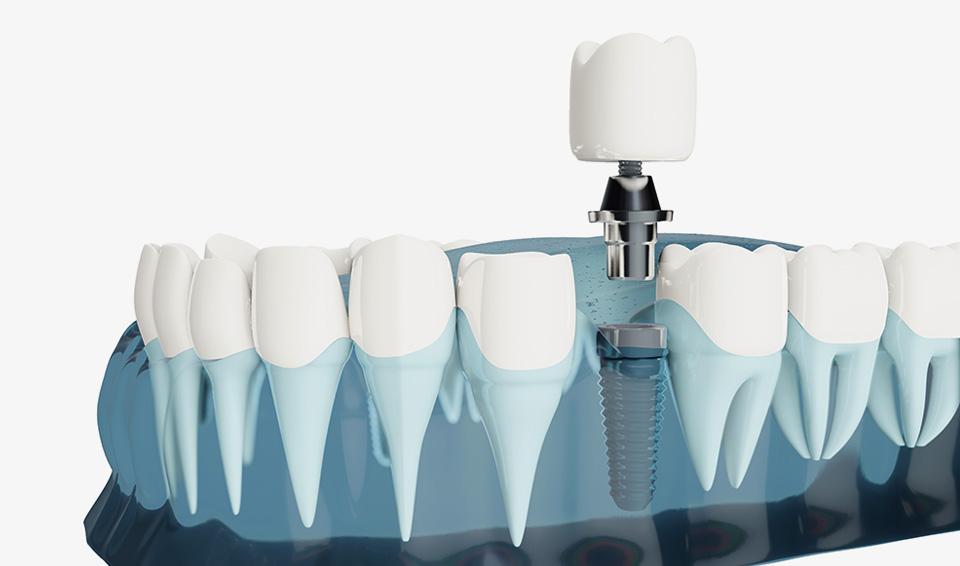
Undergoing an implant procedure in Korea is known for its high-quality care, advanced technology, and relatively affordable costs compared to Western countries. Here’s a detailed overview of what the experience typically entails:
Pre-Procedure Consultation
Before the implant procedure, you'll usually have an in-depth consultation with a dental specialist. During this consultation, the dentist will review your medical history, perform a clinical examination, and take necessary imaging tests such as X-rays or CT scans. The purpose is to assess the condition of your jawbone and decide if you are a suitable candidate for dental implants. There are various types of implants and materials, and your dentist will explain the options, helping you make an informed decision. Most dental clinics in Korea are equipped with state-of-the-art diagnostic equipment, ensuring precise evaluation.
Procedure Preparation
Once you’ve decided to proceed, a treatment plan is outlined. This is a critical step where the dentist provides a detailed schedule, including pre-operative instructions. For example, you might be advised to avoid eating or drinking for a certain period before the surgery. In some cases, especially if bone grafting is required, the complete treatment can span over several months.
Surgical Procedure
The implant surgery is generally an outpatient procedure performed under local anesthesia. However, for patients with high anxiety or multiple implants, sedation or general anesthesia may be used.
- Incision and Drilling: The first step involves making an incision in the gum to expose the bone. Then, a series of drills are used to create a channel in the bone where the implant will be placed.
- Placement of the Implant: The titanium implant, which acts as the root of the artificial tooth, is inserted into the prepared bone channel. The gum is then sutured back over the implant.
- Healing Period: After the implant is placed, a healing period of several months (typically 3-6 months) is necessary for osseointegration, where the implant fuses with the jawbone. During this period, a temporary denture may be provided for aesthetic purposes.
Post-Operative Care
Post-surgery, patients are given specific aftercare instructions to ensure proper healing. Antibiotics and pain relievers may be prescribed to prevent infection and manage discomfort. Swelling and minor bleeding are common within the first few days. Clinic staff usually follow up closely, often requiring several visits to monitor the healing progress.
Placement of Abutment and Crown
Once the implant has successfully integrated with the jawbone, a second minor surgery may be required to attach an abutment—the part that connects the implant to the crown. After the gum has healed around the abutment, a custom-made dental crown is fabricated and fitted onto it. This crown is designed to match the color, size, and shape of your natural teeth, ensuring a seamless appearance.
Cost and Insurance
One of the attractive aspects of getting an implant in Korea is its affordability. The cost of dental implants in Korea can be significantly lower than in Western countries while maintaining a high standard of care. However, costs can vary depending on the complexity of the case, the type of implant, and the clinic’s location and reputation. While some international clinics may accept insurance, it’s crucial to check with your provider beforehand about coverage specifics.
Advanced Technology and Expertise
Korean dental clinics are renowned for their advanced technology and high standards of patient care. Many facilities offer 3D printing for precise implant placement, and digital impressions to improve the fit and comfort of the final restoration. Korean dentists are highly trained, often with education and experience from prestigious institutions globally.
Accommodation and Logistics
For international patients, many clinics provide comprehensive services that include airport pickups, translation services, and assistance with accommodation arrangements. Korea’s dental tourism industry is well-developed, ensuring that patients have a comfortable and hassle-free experience. Some clinics even offer package deals that cover the entire treatment from start to finish, including sightseeing options.
By understanding the detailed steps involved in getting an implant in Korea, patients can approach the process with greater confidence and peace of mind, knowing they are receiving world-class treatment.
| Procedure Price | Korean Won (₩) | USD ($) |
|---|---|---|
| Low Price | ₩1,700,000 | $1200 |
| High Price | ₩2,800,000 | $2000 |
Exchange rate as of 2025-05-22: 1 KRW = 0.0007 USD
Please note that these prices are approximate guidelines and can vary significantly based on the clinic and your individual circumstances.
Cost of Implant in Korea
Dental implants in Korea are highly regarded for their quality and affordability, attracting many international patients. The cost of a single dental implant in Korea ranges from $1,000 to $2,500 USD. This price is significantly lower compared to many Western countries, where the same procedure can cost upwards of $4,000 USD.
Breakdown of Implant Costs
- Consultation Fees: Typically around $50 to $100 USD.
- Implant Procedure: The actual surgical procedure can range from $1,000 to $2,500 USD per implant.
- Additional Procedures: Bone grafts, sinus lifts, and other preparatory procedures can add $200 to $1,000 USD to the total cost.
- Follow-Up Visits: Post-operative consultations and maintenance may collectively cost an additional $100 to $200 USD.
Travel Expenses
-
Airfare: The cost of flying to Korea can vary greatly depending on your point of departure, season, and airline. On average, a round-trip ticket from the United States to Korea can range from $800 to $1,500 USD. From Europe, expect to pay between $600 and $1,200 USD.
-
Accommodation: Hotel rates in Korea range from $50 to $200 USD per night. Budget hostels and guesthouses can be much cheaper, ranging from $20 to $50 USD per night, while luxury hotels can exceed $200 USD per night.
-
Local Transportation: Public transportation is very affordable in Korea. A subway ticket typically costs around $1 to $1.50 USD. Taxi fares are also reasonable, with base fares starting at approximately $2.50 USD.
-
Daily Expenses: Food and other daily necessities in Korea are generally affordable. Expect to spend around $10 to $30 USD per day on meals if you dine at mid-range restaurants. Shopping, entertainment, and other miscellaneous expenses may vary depending on your preferences.
By combining the costs of the dental procedure and travel expenses, patients can potentially save thousands of dollars while receiving high-quality dental care in Korea.
Alternatives to Implant
When it comes to contraception, the implant isn't the only effective method available. Here are three alternatives that might suit different needs and preferences:
1. Intrauterine Device (IUD)
An intrauterine device, commonly known as an IUD, is a small, T-shaped plastic device inserted into the uterus by a healthcare provider. There are two primary types:
- Hormonal IUDs: These release progestin, just like the contraceptive implant. They can prevent pregnancy for 3 to 6 years, depending on the brand.
- Copper IUDs: Free from hormones, these utilize copper to prevent sperm from fertilizing an egg. They can last up to 10 years.
Benefits: IUDs offer long-term protection and can be easily removed if pregnancy is desired. Hormonal IUDs can also reduce menstrual bleeding and cramps.
Considerations: Initial discomfort during insertion and potential side effects like spotting or cramping may occur. Hormonal IUDs may not be suitable for those with specific health conditions, while those allergic to copper should avoid copper IUDs.
2. Birth Control Pills
Oral contraceptive pills are a daily medication that contains hormones, typically a combination of estrogen and progestin, or progestin alone. These hormones prevent ovulation and thicken cervical mucus to block sperm.
Benefits: Birth control pills can regulate menstrual cycles, reduce acne, and alleviate symptoms of premenstrual syndrome (PMS). They are also reversible almost immediately after stopping use, allowing for quick return of fertility.
Considerations: Daily adherence is crucial for effectiveness, and missing doses can increase the risk of unintended pregnancy. Some people may experience side effects like nausea, weight gain, or mood changes. Additionally, combination pills may not be suitable for individuals with a history of blood clots, high blood pressure, or smokers over the age of 35.
3. Contraceptive Patch
The contraceptive patch is a small, adhesive patch that releases hormones (estrogen and progestin) through the skin into the bloodstream. A new patch is applied weekly for three weeks, followed by a patch-free week.
Benefits: The patch eliminates the need for daily action and provides steady hormone levels. It can also regulate menstrual cycles similarly to birth control pills.
Considerations: The patch is visible on the skin, which can be a disadvantage for some. Skin irritation at the application site is possible, and similar to birth control pills, it may not be appropriate for individuals with certain health conditions. Forgetting to change the patch on schedule can reduce its effectiveness.
Selecting the right contraceptive method involves a thorough discussion with a healthcare provider to consider individual health needs, lifestyle, and preferences. These alternatives to implants offer a range of options to meet diverse contraceptive needs.
Conclusion
In conclusion, dental implants in Korea offer an exceptional combination of high-quality care, advanced technology, and affordability, making it an increasingly attractive destination for dental tourists worldwide. The country's emphasis on innovation and stringent safety standards ensure that patients receive top-tier treatment from highly skilled professionals. Coupled with Korea's rich cultural heritage and modern amenities, opting for dental implants here not only rejuvenates one's oral health but also provides a unique and enriching travel experience. As the global recognition of Korea's dental expertise grows, more individuals are likely to consider it a premier option for their implant needs.
